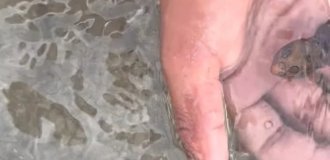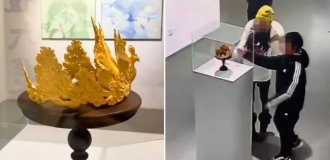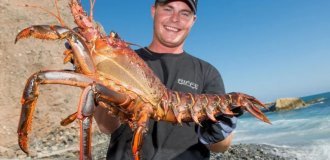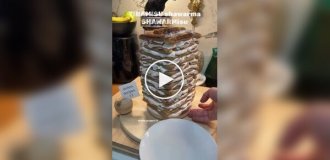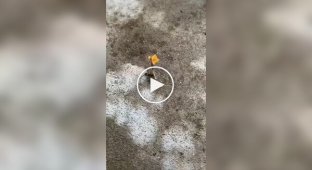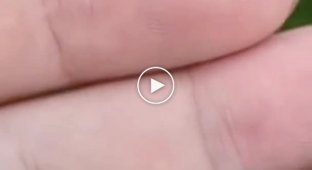Red velvet ant: their poison of 24 proteins has become legendary, because it breaks through any immunity (11 photos)
Meet the red velvet ant. Beautiful? Very! But we strongly advise against reaching out to it. In front of you is one of the most protected insects on the planet. 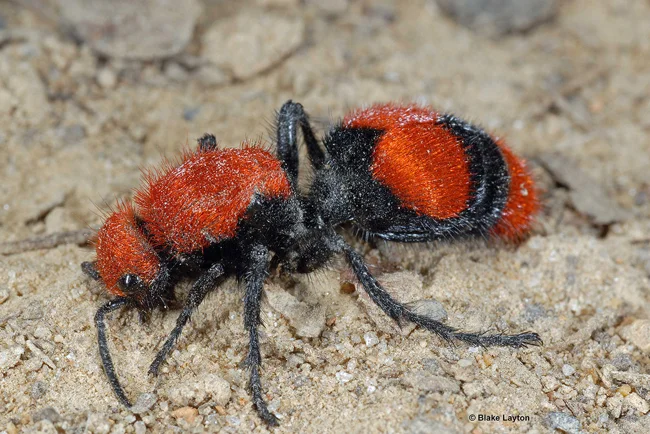
This is a female. She has no wings, but she does have a terrible poisonous sting.
You don't need to worry about meeting her offline - these insects live in the USA. At first glance, they are the most ordinary ants, except that they are too bright and hairy. But in fact, they have nothing to do with real ants. These are the descendants of solitary wasps that appeared 15-20 million years ago. Velvet ants do not build colonies and megalopolises, and do not survive by honest labor. They have upgraded themselves from all sides, and now everyone, from a bug to a person, will suffer if they want to harm them. 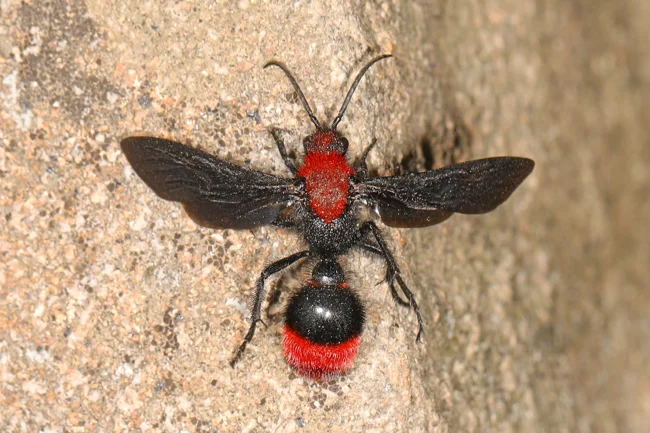
This is a male. They have wings, but they are stingless.
The velvet ant's two main arguments in any impending dispute are its giant sting and poison. The needle with which the red-black devil pokes its enemies is proportionate to its abdomen. But that's not scary. What's scary is what ends up under the enemy's skin after an attack. No one has an antidote to the velvet ant's toxin! 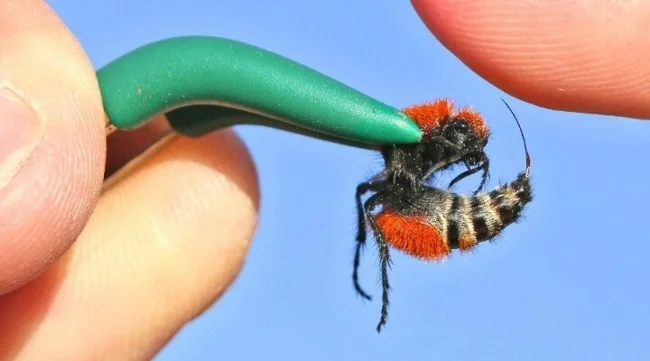
Come on, raise it another millimeter higher, and I'll destroy it!
Usually animal poisons affect a specific cellular mechanism, and the effect of the poison depends greatly on how resistant the animal is to it. That's why viper poison is monstrously dangerous for ungulates, painful for humans, but only causes temporary discomfort to a hedgehog. But the velvet ant has an arsenal of 24 proteins, each of which acts differently. 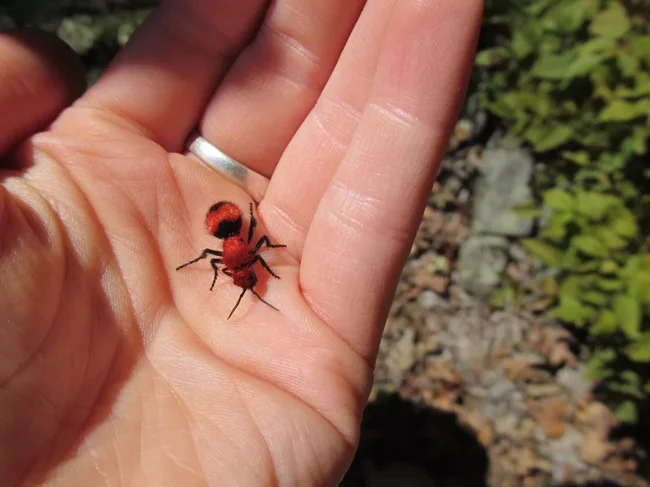
So small, but already toxic!
For example, the protein labeled Do6a is extremely toxic to dipterous insects, but is harmless to laboratory mice. However, they still feel severe pain, because their neurons are destroyed by the proteins Do10a and Do13a, which are also part of the poison. By the way, in humans, nerve cells are destroyed by the same proteins as in mice. A person stung by a velvet ant feels a terrible burning pain, as if hot oil had been dropped on his hand. Despite the small volume of poison, the pain begins to subside only 30 minutes after the bite. One good thing: no long-term consequences from the injection are expected in humans. 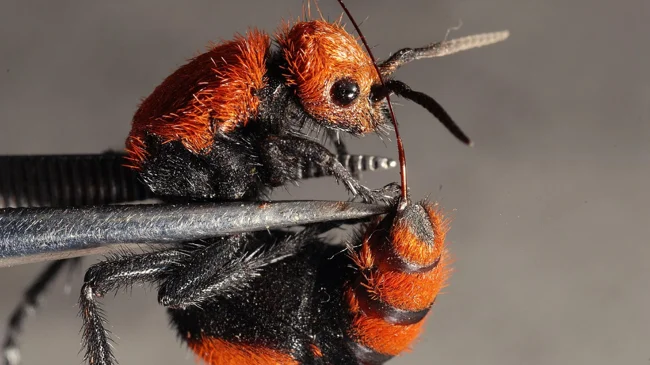
With a sting of such length, poison is, in principle, not needed.
The ants have done such a cool job that scientists have discovered the following: a red-and-black bug is capable of giving unforgettable sensations to almost any living creature thanks to a Swiss knife of poisons. Insect, mammal, reptile, bird - it doesn't matter who you are. The important thing is that the velvet toxin has the right protein to make you suffer. 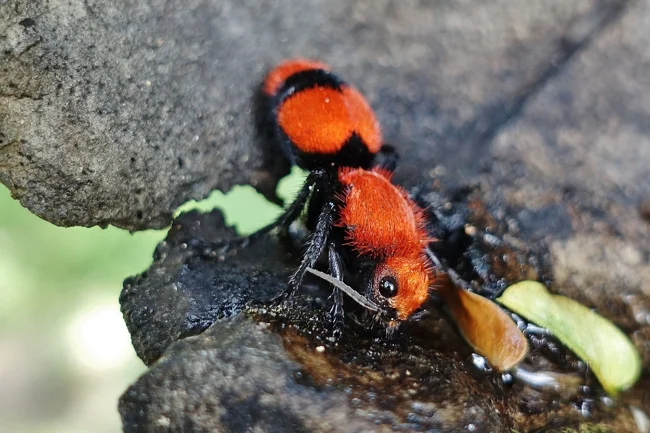
Welcome to the world of pain and suffering!
To be fair, the velvet ant honestly warns about its abilities with its coloring. The striking combination of red and black subtly hints that you shouldn't play with fire. Also, you shouldn't try to crush the bug. Yes, the velvet ant is only 2 cm tall. But the chitinous exoskeleton is so strong that it's not easy to pierce it even with a special entomological needle! 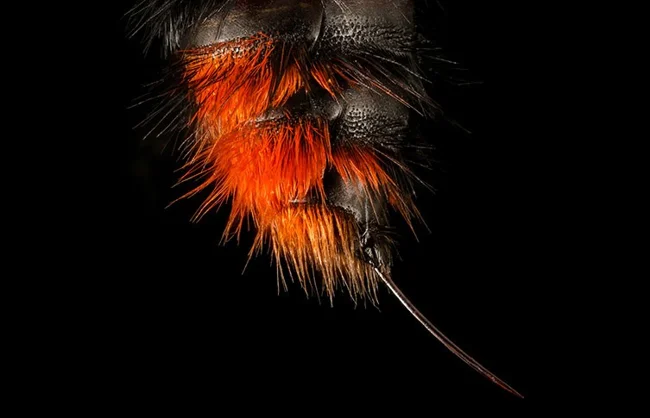
But my needle pierces you with a bang!
Thanks to such a powerful weapon, strong armor and eye-catching outfit, the tiny bug has almost no natural enemies! Research shows that only the American toad, thanks to its reaction, is able to eat them without much risk to health. All other insects, birds, reptiles, amphibians and mammals of the Atlantic coast of the USA attack red velvet ants only due to inexperience or great hunger. After all, the price of a mistake is terrible pain and the likelihood of death within 24 hours after the bite. 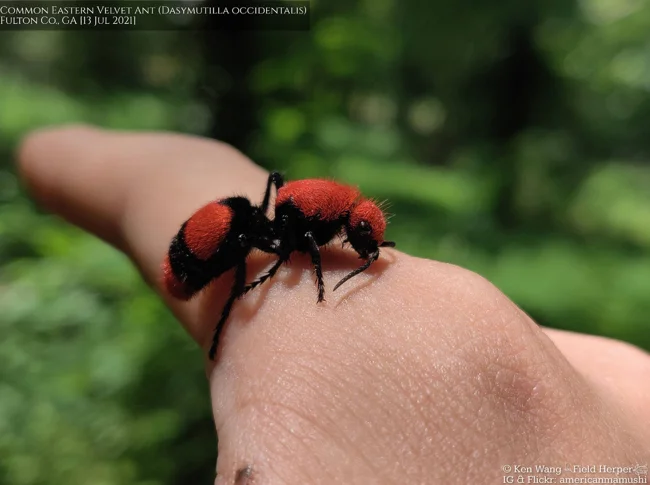
I know you're not a toad. Looks like you're in trouble, my friend...
But all this is just the beginning. The real fun begins when the velvet ant decides to have offspring. The thing is, all velvet ants are parasitoids. That's what zoologists call animals that are parasites of other creatures in the larval stage. Our red-and-black-striped friends are ruining the lives of the largest solitary wasps on the continent - the sand wasps. 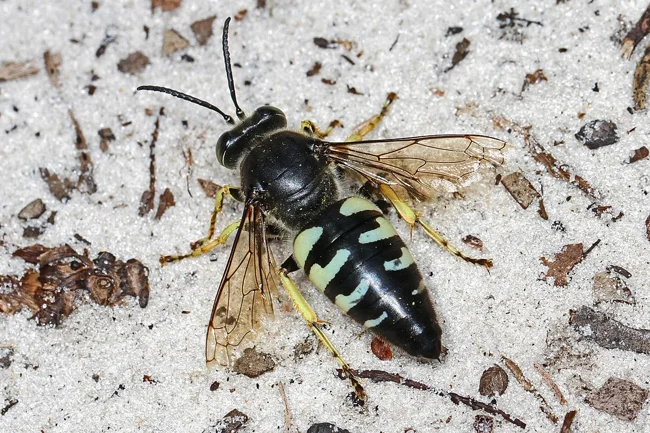
The sand wasp is twice as big as the velvet ant. It can reach 5 cm in length!
Female velvet ants stealthily enter their nests and lay eggs right under the larvae's side. The hatched babies greedily attach themselves to their neighbors. Sometimes, however, the owners of the nest catch the false ant red-handed and try to protect the offspring. As you understand, everything ends sadly for the hostess. 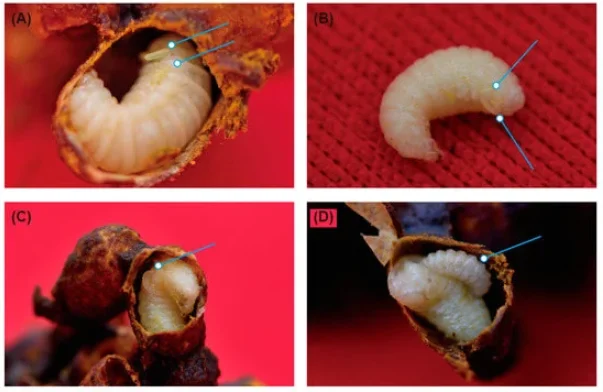
But the larvae themselves look rather unremarkable. But in the 4th photo you can see how the ant larva attached itself to the wasp pupa.
Well, have you already managed to get scared? Then we hasten to calm you down! Velvet ants themselves are pacifists. Adult insects feed on nectar and use their stings exclusively for self-defense, and only if the attacker does not understand the warning signals. 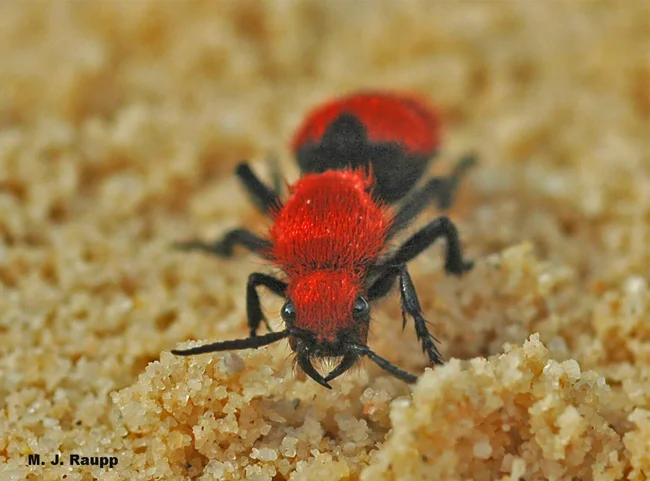
Sometimes a condemning look is enough.
The parasitoids have two of them. The first is that very bright fur coat. The second is a shrill squeak that false ants emit if you touch their soft fur. And only if the animal turns out to be completely dense, it receives a dose of poisonous proteins under the skin.

